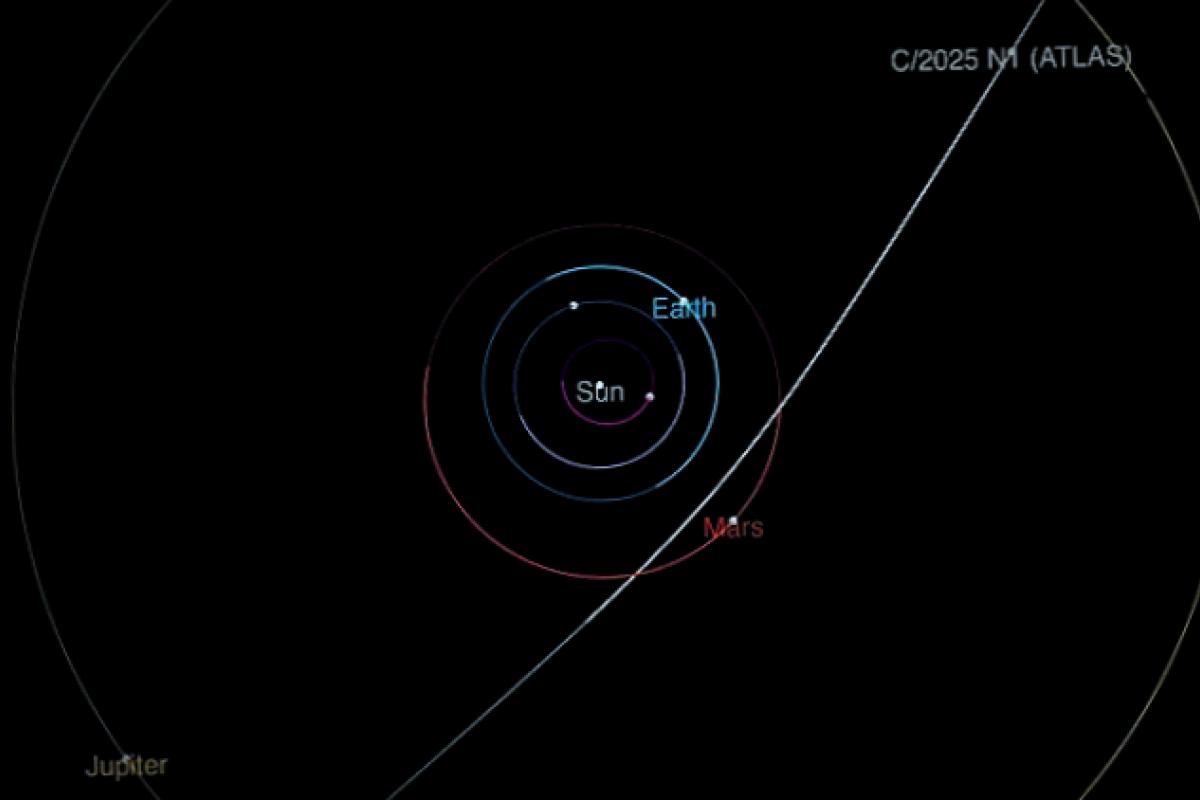On July 1, 2025, astronomers from the ATLAS (Asteroid Terrestrial-impact Last Alert System) in Chile spotted a swift-moving and faint object that’s quite different from anything we’ve seen before.
They called this intriguing discovery 3I/ATLAS (C/2025 N1), marking just the third confirmed interstellar visitor recognized in history, following ‘Oumuamua in 2017 and 2I/Borisov in 2019.
So, what’s 3I/ATLAS all about? Where’s it headed, and could it be more than just a comet?
What’s 3I/ATLAS?
Generally, folks think of 3I/ATLAS as a comet; it has a tail, its brightness is increasing as it gets closer to the Sun, and it’s releasing dust and gases.
The name 3I/ATLAS indicates its significance: the “3” for the third interstellar object found, the “I” for interstellar, and “ATLAS” pointing to the telescope system that discovered it.
What’s particularly captivating is the object’s origin. It moves fast and on a trajectory that suggests it isn’t tied to the Sun’s gravity—indicating it most likely came from another star system and just happened to wander into ours.
Speed andTrajectory
3I/ATLAS is speeding through space at over 200,000 km/h (about 61 km per second), and believe it or not, it’s actually speeding up as it approaches the Sun.
The object is on a hyperbolic path, which means it’s moving too fast to be caught by the Sun’s gravity.
As explained by Con Stoitsis, the comet and meteor director at the Astronomical Society of Victoria, “It’s like cruising through the inner solar system—slipping in between the orbits of Mars and Earth—before zipping past the sun.” He added that this path means it will escape back out into space without any gravitational ties to the solar system.
Nasa reports that the closest it will get to Earth is around 270 million kilometers.
Is It More Than Just a Comet?
While the consensus among scientists views 3I/ATLAS as a fascinating yet natural object, one scientist stands out—Professor Avi Loeb from Harvard University, who thinks we should look a little closer.
Through his Galileo Project, which explores possible signs of extraterrestrial tech, Loeb raises some thought-provoking questions about the origin of 3I/ATLAS.
In several essays published on Medium, he suggests we remain open to the idea that this object could be an artificial probe or artifact from a different civilization.
In one essay titled Does 3I/ATLAS Generate Its Own Light?, he raises the possibility that it could be emitting its light rather than merely reflecting sunlight, a trait not observed in any known comet.
He noted in another intriguing paper, “If it turns out to be a technological artifact, its intentions could be benign, malignant, or something in between, and that poses significant implications for humanity.”
However, NASA is remaining firm in their stance. As Tom Statler, NASA’s leading scientist for solar system small bodies said, “It looks and acts just like any other comet we are familiar with.”
Loeb later acknowledged that considering 3I/ATLAS as a comet is a reasonable assumption, noting that he aims to push for questioning established beliefs rather than make definitive claims.
“We ought to hold onto our childlike curiosity and seek real evidence instead of claiming to know all the answers”, he shared in a blog post.
Will We See 3I/ATLAS?
The comet is expected to swing by the Sun on October 30, making its closest approach at about 1.4 au (around 130 million miles), just shy of Mars’ orbit.
Even though its size and precise characteristics are still under analysis, NASA anticipates it will become visible through ground-based telescopes starting early December, after it moves back into view post its passage by the Sun.





















